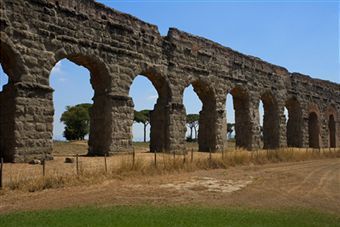This is the Ancient Roman Aqueduct Paper Model. It is a nice model for Dioramas, School Works, RPG and Wargames. In the .rar file you will find the model in JPG and PDF formats and also the Sketchup 3D model, to help with the assembly. You can put two, side by side as in the image below, to make a cool scenery for miniatures.
Este é o modelo de papel do Antigo Aqueduto Romano. É um modelo bem legal para Dioramas, Trabalhos Escolares, RPG e Wargames. No arquivo .rar você encontrará o modelo nos formatos JPG e BMP, além do modelo em 3D (Sketchup), para auxiliar na montagem. Você pode montar dois e colocá-los lado a lado e terá um belo cenário para miniaturas.
 |
| The Real Thing |
 |
| Arches of the Pont du Gard - France |
Download: Ancient.Roman.Aqueduct.Paper.Model.by.Papermau.Download.Now!
More Paper Models of Ancient Architecture and Buildings related posts:
Petra Treasure Paper Model In 1/72 Scale - by Papermau - Download Now!
Greek-Roman Ruins Diorama - by Papermau - Ruínas Greco-Romanas Download Now!
Greek Temple Paper Model - by Papermau - Download Now!
Roman Castrum In Romania - by Papermau - Download Now!





The Download link just reload this page. Where can we download it? Thank you.
ReplyDeleteI just repost this right now. Enjoy, Jorgen!
DeleteThe download produces a broken .rar file and nothing extractable. Thanks.
ReplyDeleteHello, I just tested the .rar file and it is extracting normally. Make sure you have Winrar installed on your computer and choose the free version to download.
DeleteBrilliant, Thanks. My copy of WinRAR was borked.
DeleteI have RARZilla (free) installed, and that did the job.